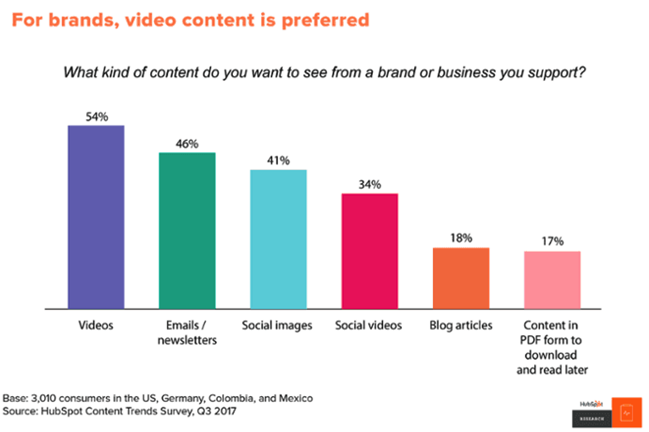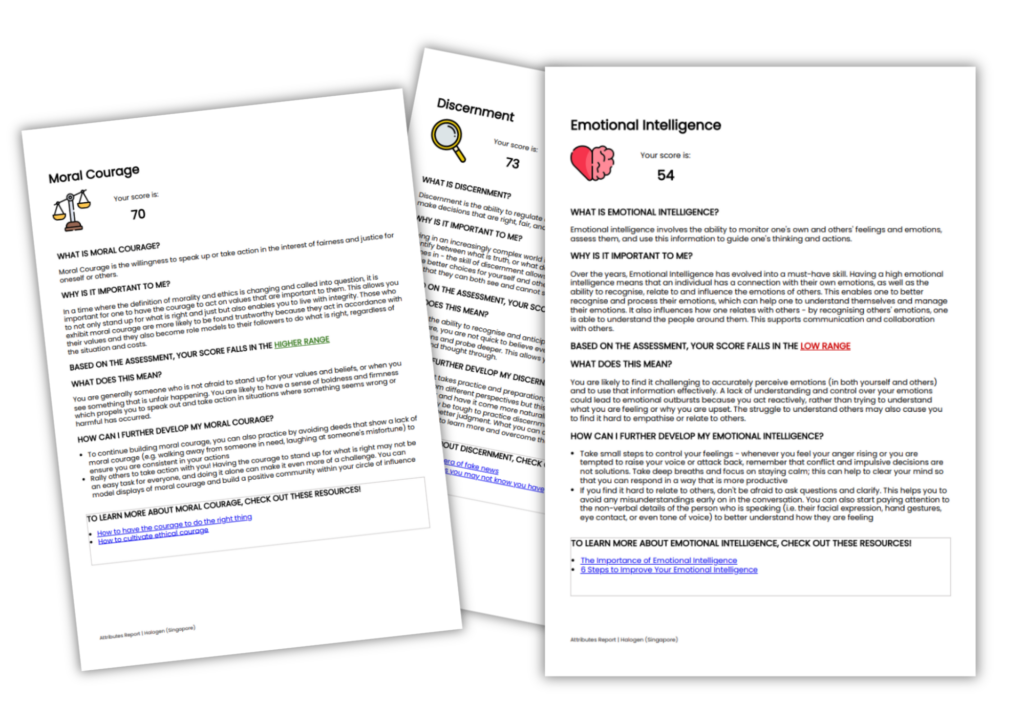When you’re trying to connect with customers and potential customers, your first instinct might be to just bombard them with a wall of text.
Don’t do that.
Text is one of the most inefficient forms of content from a retention standpoint. People respond more to visual storytelling, in which you break up your text blocks with effective videos, images, graphic icons, and more.
If you’re not implementing elements of visual storytelling into your marketing campaign, it’s likely that you’re not getting full market penetration. Visual storytelling engages the customer’s attention and imagination. It prevents them from growing bored or disinterested. Also, it’s more easily retained in the long run.
In this article, we’re going to cover some of the most effective visual storytelling techniques that you can implement into your marketing content in order to connect better with your target audience.
What is visual storytelling in marketing?
Storytelling is one of the world’s oldest marketing strategies. With it, you build an emotional bridge between your company and the customer through content. You tell the customer a story that they can easily see themselves taking part in.
Also, you touch on various pain points that are common for your target customers and give tangible examples of how your company helps with that. You’ve now created a story that your customer can follow from beginning to end. And much like a story, it has a moral.
Instead of something like, “slow and steady wins the race,” it’s something more akin to “buy this product and you can alleviate this issue that you’re having.”
Visual storytelling follows the same concept, but instead of writing everything out, you utilize visual media to help make your point.
Why should you use visual storytelling techniques?
Above, I vaguely mentioned that people retain more of what they see than what they hear or read. It’s one thing to be told that, but it’s another thing entirely to see the actual numbers.
If you read or hear something, you’re going to retain about 10 percent of it after three days. But if you actually see the content, whether it’s through a photo or video, you’ll retain a whopping 65 percent.
Don’t believe me? Check out this stat on Twitter from Buffer.
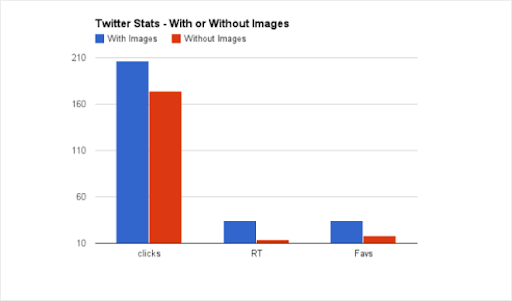
The image above shows Twitter statistics based on tweets sent out with and without images. As you can see, engagement rates across the board are much higher when images are involved.
So, now you know why you should be using visual storytelling techniques. It’s time to figure out what kind of visual storytelling content you should produce.
Use photos
Photos are by far the most popular form of visual storytelling.
That’s because they’re easy to obtain and share. You can use a photo as either a symbolic or literal representation of your story.
Let’s say you’re a B2B marketing firm talking about marketing farming initiatives. That’s where you perform marketing functions, such as sending out coupons or inviting customers to a webinar. You’re planting the seed of an idea in your customer’s head and letting it grow over time.
If you showed this concept through a photo of a farmer tending the field, you’ve created a symbolic representation of the story you’re trying to tell.

Something more literal could be an eCommerce company showing pictures of consumers using their products.
You should be using images liberally because when it comes to visual storytelling, this is the low hanging fruit.
Though, while it may be tempting to overload your website with stock images, there is such a concept as too much of a good thing.
Crowding your website with random or uninteresting images can negatively impact the website’s usability.
“Often websites are stuffed with unnecessary elements such as meaningless stock imagery, secondary navigational links and irrelevant content the user does not care about,” according to WebsiteSetup.org. “Too often we have the attitude that somebody might find it useful so let’s put it online. The result is that our websites become so cluttered that people cannot find the elements that they are interested in.”
Just make sure that when you choose your images, they’re strategic and serve a purpose.
Use videos
Video can be one of the most effective forms of visual storytelling. We mentioned before how someone retains 10 percent of what they read and 65 percent of what they see. Back then, that 65 percent probably felt like a lot. Stock videos can help you if you need some help creating video content for your project.
Well, with video, people are likely to retain up to 95 percent of what they see. For example, by incorporating the unique perspective and stunning visuals provided by drone footage, you can capture the attention of your audience and leave a lasting impression on them.
That’s why brands and customers alike love video content. It’s an effective way to tell your stories and have them sink in for your customers in a way that will resonate into the future.
Make sure that when you produce video content, you’re not relying too heavily on narration or background music to set the scene. A lot of viewers actually prefer to watch videos with the sound off, so you should make sure that your message can come across easily through what they see alone.
Break up text
Walls of text are the enemy. You can vanquish said enemy by breaking up your text using strategic images and even graphic icons and bullet points in order to tell your story more effectively.
Take this excerpt from AllState Insurance, for example.
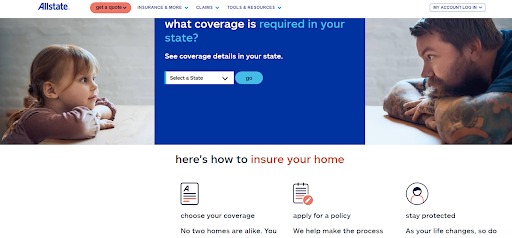
At the top of the page, you have two images framing an interactive text element. Then, below that, you have a section on how to ensure your home, broken up into columns with visual icons associated with every step.
Walls of text are intimidating and will either scare readers away or just bore them to the point that they will abandon your page.
By breaking up large sections of text, you’ll be able to effectively hold the attention of your readers and create a more visually appealing story.
Use infographics
Never underestimate the storytelling power of an infographic.
Infographics allow you to tell your story through text, images, graphs, and more. They are like marketing comic books.
They’re engaging, easy to consume, and above all else, easily shareable.
Sharing is incredibly important when you’re trying to utilize visual storytelling as part of your marketing campaign. If you create engaging visual content that your audience will want to share, your own customers become another marketing channel, sharing your storytelling imagery along their social media channels.
Infographics can come in any size and shape, but they are typically long, extending down a page, and contain a wealth of statistical information that helps tell your story.
Use memes
If you’re marketing to younger demographics, it’s important that you learn how to become a “meme lord.”
Share memes on social media and even include them in your blog content in order to accentuate your point.
Never underestimate the power of a good meme. If it can strengthen your point while also making your reader smile or laugh, it has added power to the story that you’re trying to tell.
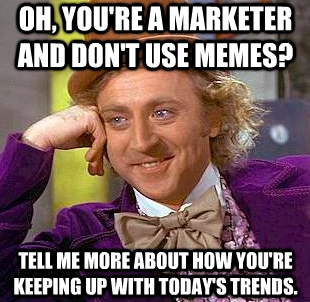
See what I mean?
Keep your ear to the ground when it comes to the memes that you’re using. If you see a certain meme starting to gain in popularity, consider using it. Memes go in and out of style faster than articles of clothing, so it’s going to take some attention.
You can also make memes yourself. There are a lot of meme generator apps out there.
Of course, you have to take your audience into consideration when deciding whether or not to use memes. If you’re marketing to senior citizens then your meme game is not going to factor into an effective storytelling campaign.
In conclusion
Visual storytelling is important in the world of digital marketing. If you can pepper your content with strategic, informative, and entertaining visual storytelling elements, you can create messaging that will stay with your consumers, keep them engaged and in the moment and help push them toward a purchase decision.

